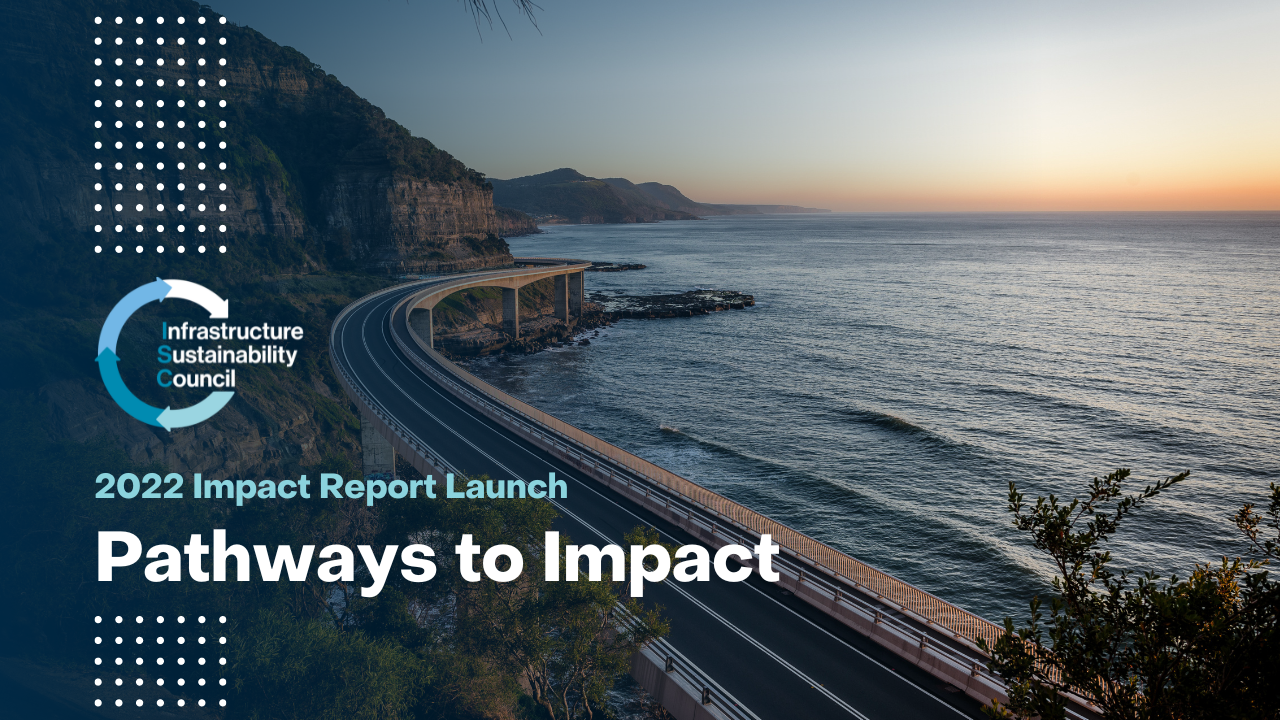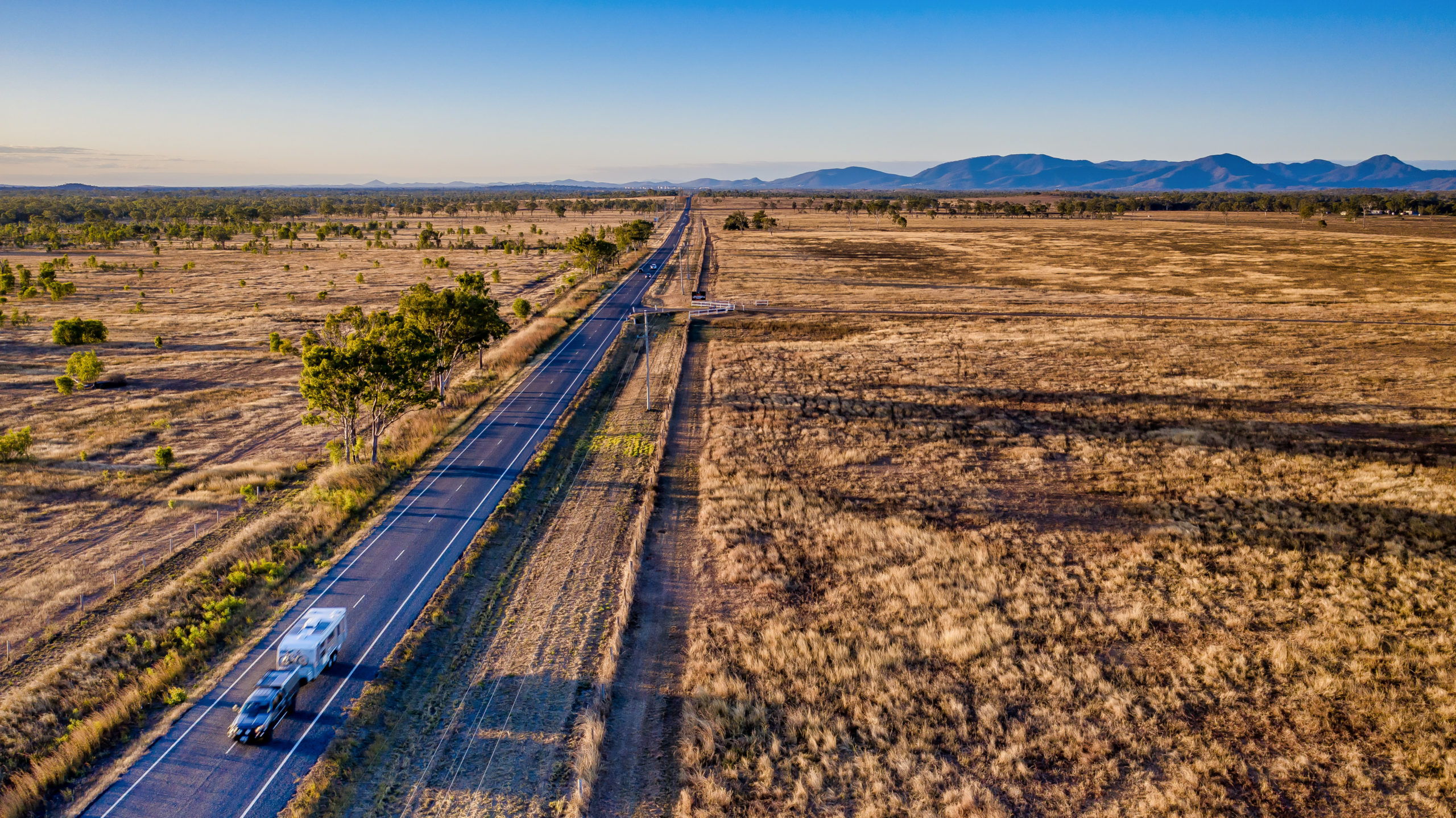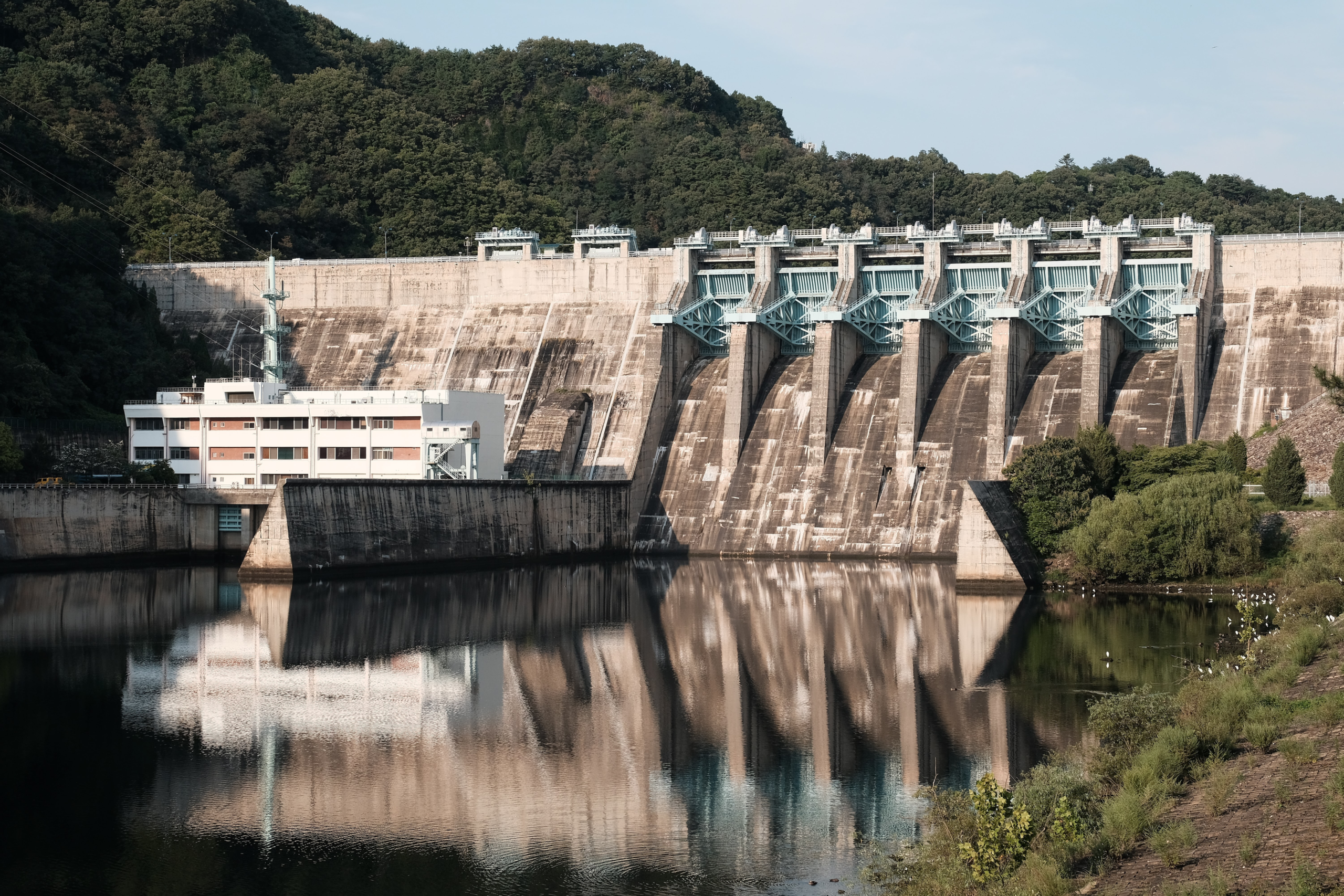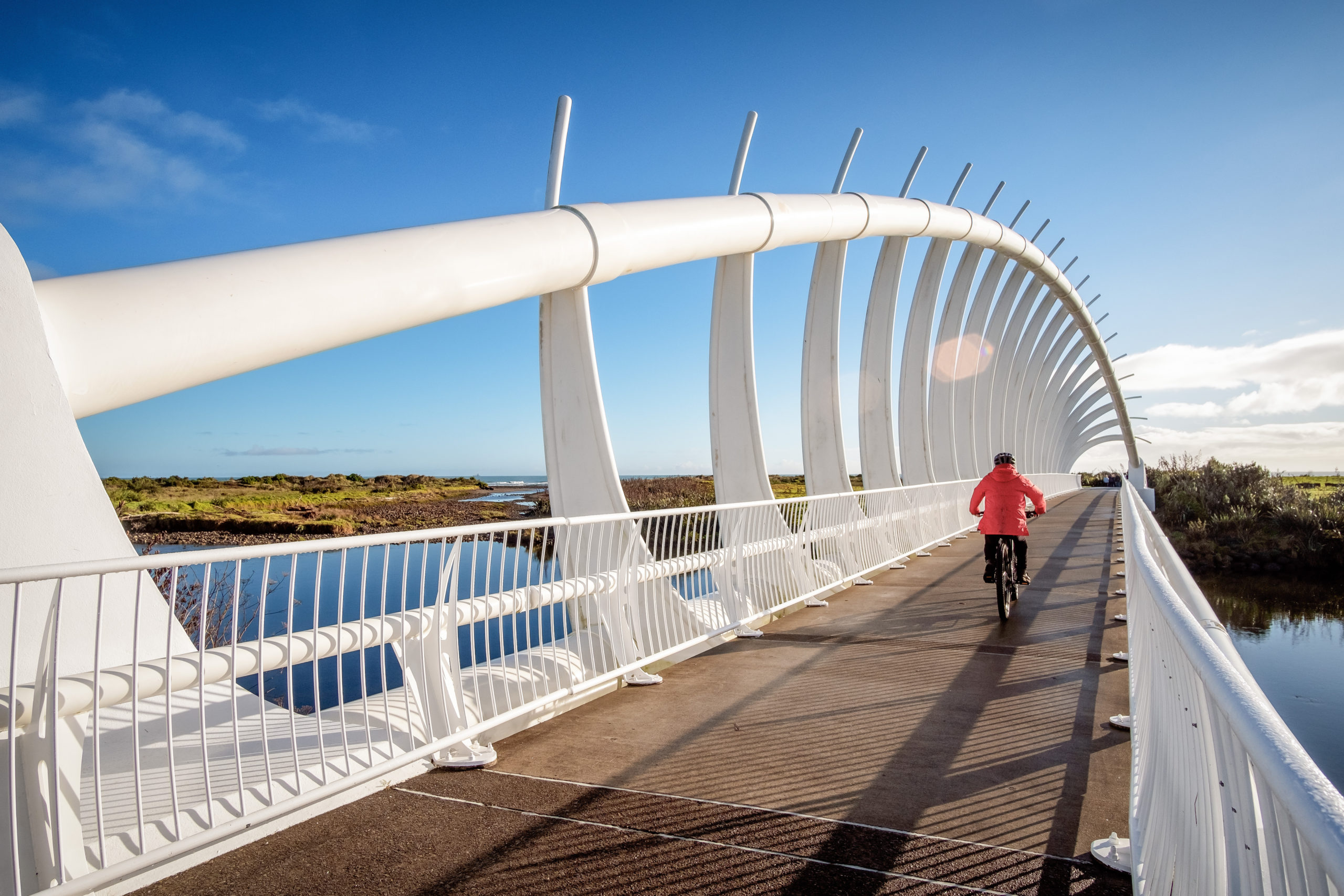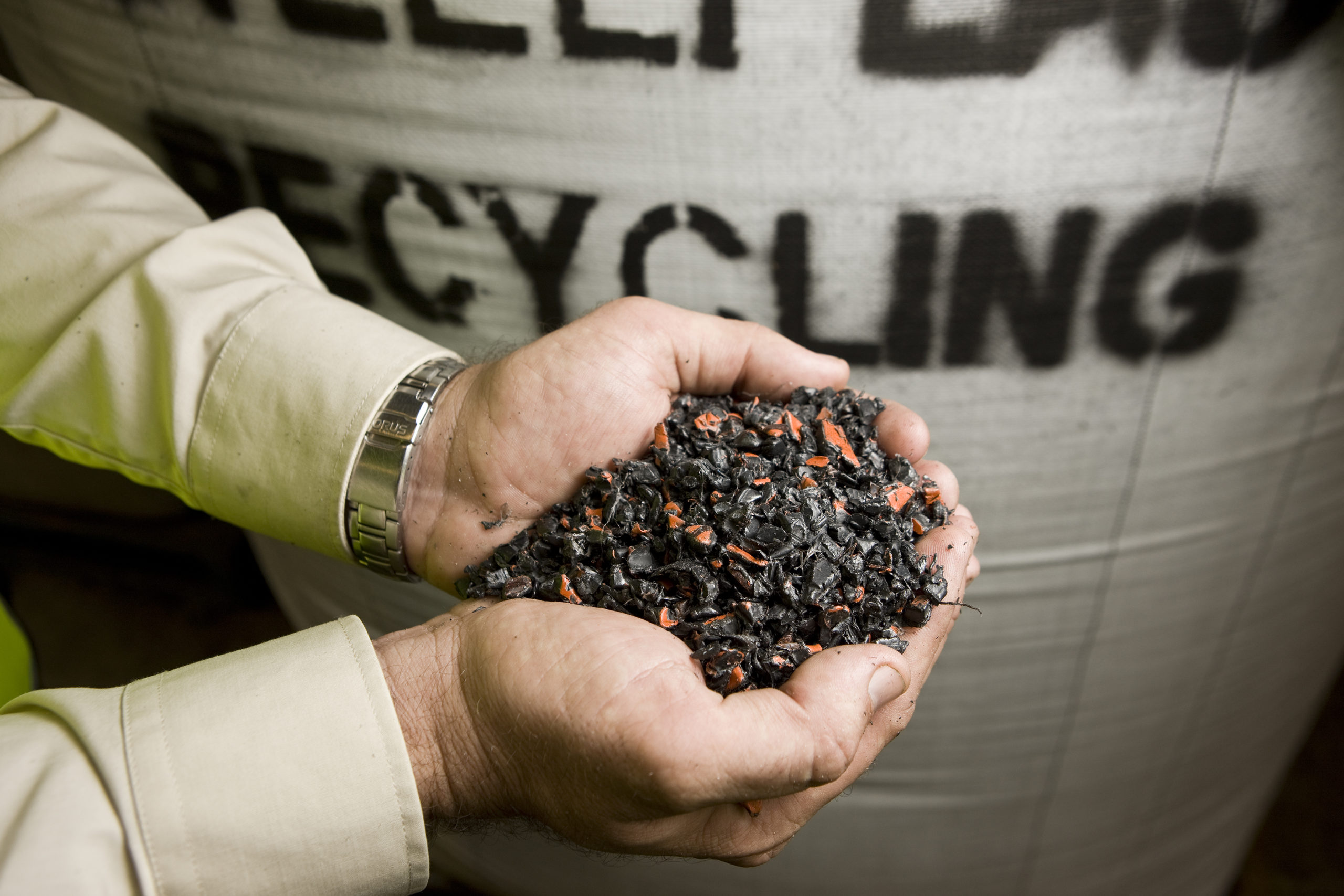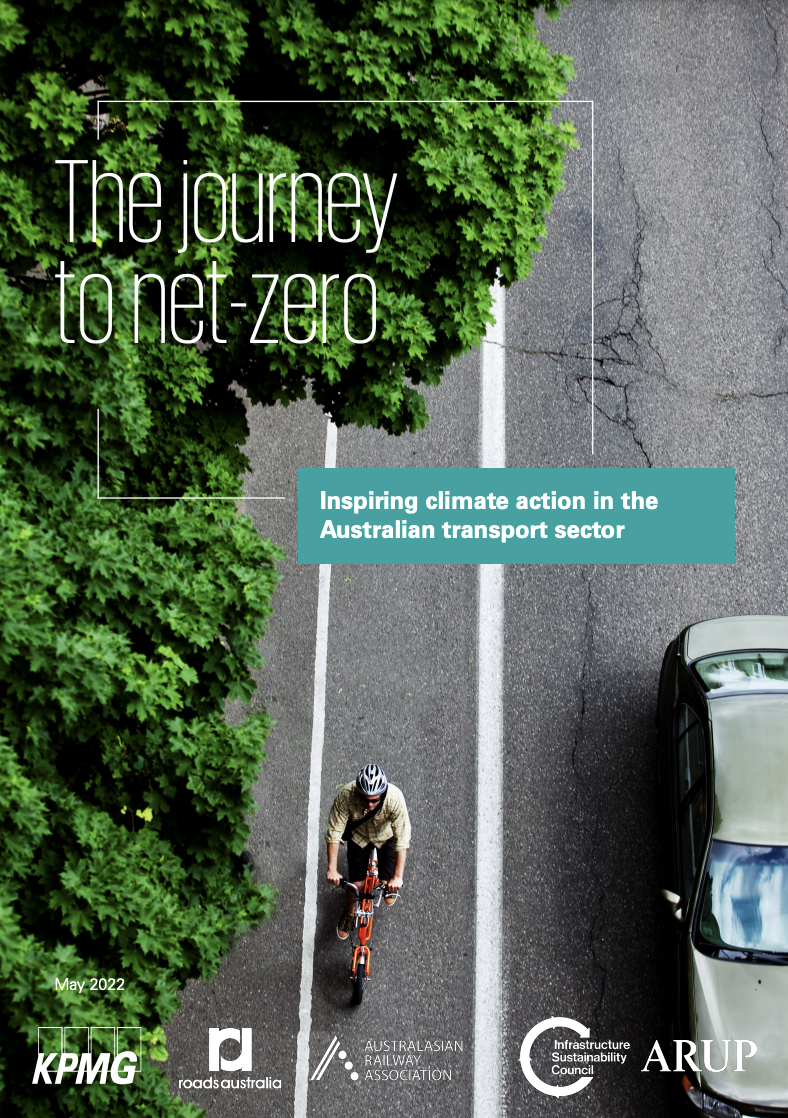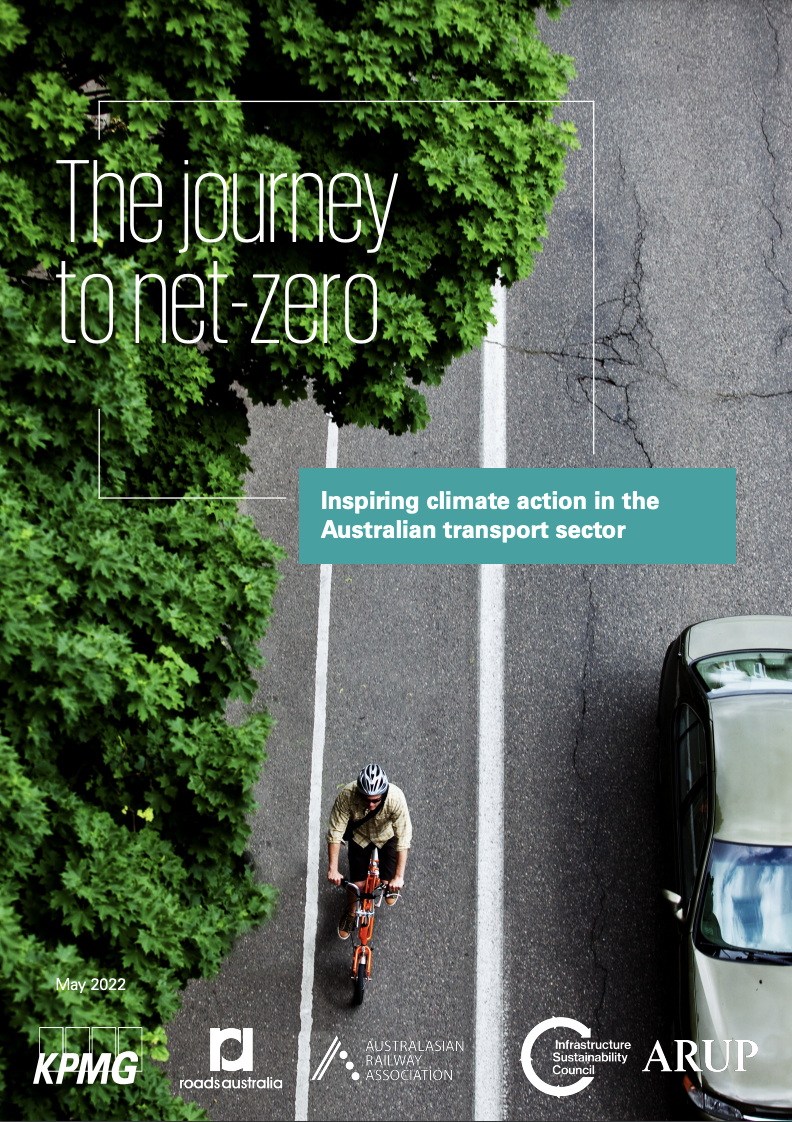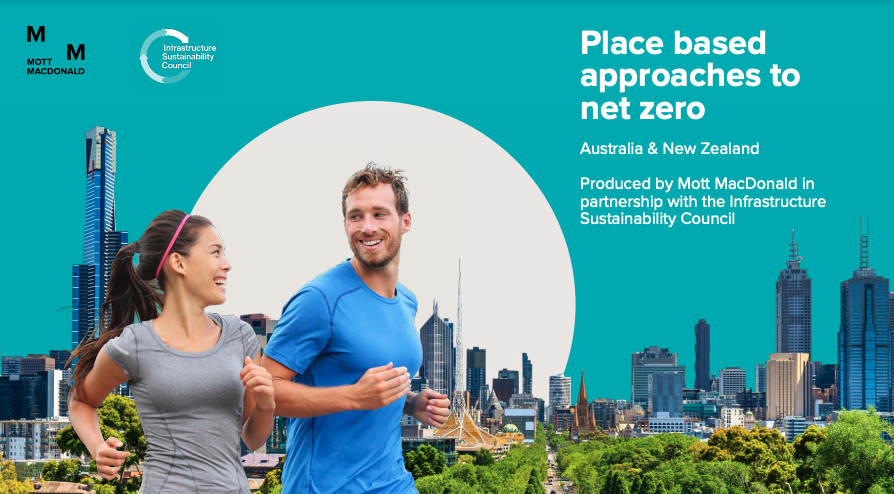The Infrastructure Sustainability Council (ISC) is proud to announce the winners of the 2022 Gala Awards. This year’s awards will honour excellence in sustainability across environmental, social, governance, and economic quadruple bottom line outcomes, and outstanding contributions to market transformation at organisational, systemic and societal levels.
1. Sustainability Leadership – Excellence in Governance
Recipient: John Holland & Laing O’Rourke Joint Venture
Project: Sydenham Metro Upgrade
Right from the initial planning stages of the Sydenham (Melbourne) Metro Upgrade, the project was underpinned by a comprehensive and robust Sustainability Strategy. This was a deliberate and carefully considered part of John Holland and Laing O’Rourke’s joint venture master plan to mitigate risk and provide a full-bodied governance structure that was present and pragmatic at all levels of the project.
Sustainability Strategy Objectives:
• To identify governing objectives and targets.
• To integrate these objectives and targets into the project’s deed, policies, management plans, sub plans and all subsequent processes, procedures, templates and trackers.
• To overcome issues caused by interfacing between multiple participants (stakeholders such as Sydney Water, Sydney Trains, ARTC, Sydney Metro, Transport for NSW, Inner West Council; multidisciplinary design and site teams; and suppliers and contractors) with different priorities.
• To create a working environment where the strategy objectives flowed throughout all the teams involved, so that all individuals and stakeholders were empowered to find ways to work better.
Sustainability Strategy Outcomes:
• The saving of over 15,420 tonnes of aggregates, over 1140 tonnes of asphalt, over 4,480m3 of poured concrete and over 784 tonnes of steel reinforcement.
• A massive reduction in waste, compared to past projects.
• More than a 3,460-tonne reduction in carbon emissions.
The project’s legacy is not just about environmental sustainability. It’s also about the influence of a governance structure that doesn’t just give permission to question the status quo, but actively encourages that questioning.
2. Sustainability Leadership – Excellence in Economic
Recipient: Acciona Samsung Bouygues Joint Venture
Project: M4-M5 Link Tunnels
After extensive research and development with the supply chain that took more than a year, the Acciona Samsung Bouygues Joint Venture developed a world first shotcrete application process for the lining of the M4-M5 Link Tunnels in Sydney. This process included creating an innovative shotcrete design mix as well as improving techniques to apply shotcrete to the tunnel walls in order to reduce rebounding.
Tunnel Lining Objectives
• To develop a new offering for this and future projects that use shotcrete for tunnel lining. Future tunnel projects will be able to capitalise on the sustainability benefits of a proven high-performance shotcrete and incorporate it into their own tunnel design.
• To provide pathways for future collaboration with stakeholders (supply chain, designers, construction team and independent certifiers) to conduct research and development, to show proof of concepts, and to address engineering challenges with substantial sustainability benefits on upcoming infrastructure projects.
Tunnel Lining Outcomes
• A reduction of more than 33,000 (t CO2-e) of embodied carbon. This in turn has reduced the amount of shotcrete used on the project by 27,000m3 (15%) and reinforced steel fibres by 830 tonnes (10%).
• The removal of 9,000 heavy vehicle movements off Sydney local and main roads.
• Demonstrated cost savings of $11,000,000 to the project by minimising materials through the application of innovative high-performance shotcrete.
• A permanent shift in the supply chain for how future tunnel projects will be designed and constructed.
The legacy of the high-performance shotcrete used for the lining of the M4-M5 Link Tunnels is a design mix that has allowed the M4-M5 Link Tunnels project to reduce the thickness of the lining of the tunnels by 15%. It is expected that this design mix will be business as usual for future road tunnel projects that require shotcrete for tunnel linings.
3. Sustainability Leadership – Excellence in Social
Recipient: McConnell Dowell
Project: The Echuca-Moama Bridge Project Stage 3
During Stage 3 of the $323.7m Echuca-Moama Bridge Project, Major Road Projects Victoria and its construction partner, McConnell Dowell, teamed up with local disability support service provider Vivid. This partnership gave 23 young adults, living with disability, an opportunity to be part of a dynamic and inclusive workplace. They were tasked with cleaning and maintenance roles at the project site offices in both Victoria and New South Wales.
Disability Employee Objectives
• To provide young local people with paid and meaningful employment in a supported environment.
• To generate significant Aboriginal employment outcomes and exceed the Aboriginal employment target.
• To support Aboriginal owned businesses by spending a significant percentage of the total contract value with those businesses.
Disability Employee Outcomes
• By the Project’s completion in early 2022, the Vivid supported employees had collectively contributed around 20,000 work hours to the Project, an experience that has substantially improved their access to a myriad of work tasks and boosted their levels of self-confidence and interpersonal skills.
• Nine of the supported employees seized the opportunity offered by the Project to further expand their skills by undertaking and completing a Certificate II in Cleaning Operations at Bendigo TAFE’s Echuca campus.
• Of the nine Vivid graduates, four are now in mainstream permanent part-time employment, and one has applied for open employment through a traineeship.
Due to the increased income generated by the Project’s procurement contract to fill cleaning and maintenance roles, Vivid has been able to upgrade areas of its business that do not attract direct funding. This has improved its ability to support the employment pathways of local people living with a disability.
4. Sustainability Leadership – Excellence in Environmental
Recipient: John Holland & Laing O’Rourke Joint Venture
Project: Sydenham Metro Upgrade
During the Sydenham Metro Upgrade, the joint venture team of John Holland and Laing O’Rourke closely collaborated with stakeholders on a sustainability-centred design approach. The value of this approach was demonstrated when design adjustments were made that led to excellent environmental, societal and economic outcomes.
Sustainability-centred Design Objectives
• To conduct analyses of drainage models and patterns in order to discover how the model might be effectively revised.
• To downsize parts of the infrastructure and reduce material usage by changing the original design of the aqueduct from four cells wide to three cells wide.
• To preserve and upgrade, rather than replace, a Heritage listed pumphouse.
Sustainability-centred Design Outcomes
• The reduction in width of the aqueduct led not only to significant reductions in materials for the aqueduct, but also for the access ramps, culverts, transition chambers and substructures.
o The transitions from the culvert to the aqueduct were reduced in size from 18 metres in width to 13.2 metres.
o The transitions chamber was originally one large structure, but was optimised to become two smaller structures that attached to each culvert.
o Instead of having three larger diameter pipes, the opportunity was identified to instead utilise four smaller diameter pipes in the middle section of the aqueduct and three smaller diameter pipes at either end.
• There was a total saving of 7,500 TCO2e and a total material lifecycle reduction of 40%. There were considerable savings in construction costs and demolition waste and energy reductions, due to less materials and equipment required for construction.
The most powerful legacy of the project was the recognition of the necessity and value of thought leadership from those within the construction and engineering space. Designing with sustainability as the core focus empowers experienced minds in the industry to challenge the status quo.
Without input from the project team, and without the vital analyses of flow rates, ground conditions, and drainage models, the original design would have been accepted and all opportunity for economic, material, societal and environmental savings would have been lost.
5. Industry Impact – Private Sector, Large
Recipient: Acciona
As a sustainable solutions business, Acciona recognises that the impact of climate change is endangering every facet of the natural and physical world. Acciona asserts that changing course in order to realise a sustainable, liveable future for all requires an immediate, ambitious and concerted effort, and Acciona’s Sustainability Master Plan (SMP) 2025 is its contribution to that effort.
Sustainability Master Plan 2025 Objectives
• To accelerate the response to the climate change emergency.
• To provide a roadmap to moving beyond a sustainably responsible and resilient business to a business which embraces and promotes our Regenerative Vision and transition towards a decarbonised economy.
• To pursue 100% renewable electricity on new tenders from July 2022.
• To continue to be carbon neutral (Acciona is the only construction company in the sector to be carbon neutral, and has been globally since 2016).
Sustainability Master Plan 2025 Outcomes
• Recognised as a sustainability leader by the world’s top sustainability indexes and rating schemes.
• An active and engaged employee base, with sustainability advocates now embedded across multiple reporting roles within the business.
• Secured €3.3 billion in sustainable financing, driving business and project sustainability performance.
• Acciona’s dedicated Decarbonisation Fund supports and fosters innovation, leading to low-carbon solutions.
Acciona is contributing positively to the climate emergency and a sustainable future for all through its approach to decarbonisation. Its approach, driven by the SMP2025, is inspiring other companies to follow its lead.
6. Industry Impact – Private Sector, Small
Recipient: Earth Friendly Concrete Pty Ltd – Wagners
Through its ultra-low carbon technology, Wagners has developed and branded Earth Friendly Concrete® (EFC). This enables concrete producers to eliminate cement from concrete, thereby reducing the carbon footprint in the built environment.
Earth Friendly Concrete Objectives
• To align with United Nations Sustainability Goals (currently 9 in total).
• To support the circular economy.
• To disrupt current old-world standards and specifications.
• To encourage cement producers to combine Wagners proprietary EFC Activator Solution and admixtures with materials from their existing suppliers of aggregates and SCM’s.
Earth Friendly Concrete Outcomes
• Through a range of strategies, Wagners has reduced the embodied carbon of Earth Friendly Concrete from an average 120kg of co2/m3 to an average 90kg of CO2/m3, without the need for any offsets.
• During the last 18 months, Wagners eliminated 1,481.6t of CO2 and 2,043.6t of virgin raw materials from innovative infrastructure projects.
EFC is the lowest embodied carbon concrete available on the market, and is now being used on a range of infrastructure projects. When used at scale, it makes a significant dent in man-made carbon emissions.
7. Industry Impact – Public Sector
Recipient: Main Roads Western Australia
Main Roads Western Australia has made a strong contribution to circular economy industry impact by delivering infrastructure projects that are promoting social and organisational change at a strategic level.
Circular Economy Objectives
• To facilitate systemic change through policies and standards.
• To increase Aboriginal engagement and participation by awarding $700 million worth of contracts and 3.5 million work hours to Aboriginal businesses and people over the next five years.
Circular Economy Outcomes
• Over the past 12 months, Main Roads Western Australia spent $97.9million on Aboriginal businesses, equating to 586,700 work hours; and
• The use of crushed recycled concrete was increased to over 117,000 tonnes.
Main Roads Western Australia is committed to contributing to the circular economy in WA, including doubling the broader ongoing use of Roads to Reuse Crushed Recycled Concrete to beyond 200,000 tonnes, and continuing to drive the use of locally produced crumb rubber.
8. Individual Contribution to a Sustainable Future – Emerging Leader
Recipient: Sam Donaldson
Sam Donaldson has been motivated to make sustainability in construction a reality throughout his entire career. An important milestone for Sam was his appointment to his current position as Hub Sustainability Leader at Laing O’Rourke. He had a vital role in the development of their Global Sustainability Strategy – to ensure the unique factors associated with operating in Australia were considered and prioritised. This strategy has not only caused a cultural shift within the organisation, but also in the construction sector more broadly.
With regard to IS ratings, Sam has achieved some of the highest results for complex major infrastructure projects and has received multiple IS awards for delivering positive organisational change and exemplar outcomes. He has also put a decision-making framework in place to ensure consistency and ethics across the organisation, including the rejection of projects considered unacceptable in terms of future emissions, such as thermal coal projects.
As an ambassador to the organisation’s STEM+ program, he helped design and deliver a sustainability module. From the Laing O’Rourke Graduate Development Program, he created a dedicated rotation of young professionals into sustainability roles. And for the organisation’s leaders, he helped design, with Cambridge University, a key strategic leadership program around maximising innovation and value creation through sustainable solutions.
On a personal note, Sam’s home town of Ocean Shores on the NSW North Coast was significantly impacted by the 2021 floods. Houses and infrastructure were damaged. Families and friends were displaced. These events strengthened Sam’s commitment to effect change.
‘It made me realise that time is not on our side. We are seeing a different world in recent times. It’s only going to get worse unless we all pick up the pace and inspire more of our people, and more of our industry, towards sustainability in construction.’
9. Individual Contribution to a Sustainable Future – Sustainability Champion
Recipient: Georgia Gosse
Georgia Gosse is currently the Infrastructure Advisory Principal and Queensland Regional Service Group Leader with Aurecon. Before joining Aurecon in 2022, Georgia served as the sustainability manager for Australia’s national freight network, Inland Rail, for four years.
During her tenure at Inland Rail, Gosse established a strong sustainability culture by implementing environmental and sustainability policies, strategies, systems, and processes, and by running events. One of her most notable contributions was the installation of carbon-neutral precast culverts for Inland Rail that delivered a reduction of 7,250 tonnes of carbon in the project. This is equivalent to removing 350 cars from the road for a year.
Georgia drives positive change in the infrastructure industry by sharing her knowledge and inspiring more women to pursue careers and make their marks in the industry. She is a sought-after speaker at industry conferences and events, where she advocates for sustainability within the infrastructure industry.
She is an integral member of the Australasian Railway Association’s (ARA) Sustainability Committee and was closely involved in the development of the ARA’s sustainability strategy and the launch of their first sustainability conference. She mentors emerging and aspiring sustainability leaders through her involvement in the ARA’s Women in Rail Mentoring Program, which aims to help women working in rail develop their leadership capabilities, and in the Grandshake Program, which aims to help high school students explore and understand different career opportunities.
‘The younger generation tell me they want to do work with a purpose and to feel like they are contributing to the greater good. The infrastructure industry needs more passionate people who are driven to contribute to the fabric of our society. There is an obvious alignment and the promotion and increased visibility of sustainability in infrastructure projects will help attract the future generation to the infrastructure industry.’
10. Individual Contribution to a Sustainable Future – Enduring Impact
Recipient: Andrew Ackerman
Andrew Ackerman, the Alliance General Manager of the South Eastern Program Alliance (SEPA), has long been a sustainability champion in the construction industry.
For Andrew, having sustainability as a core focus has been at the forefront of what he has been doing for over two decades. Bur for change to occur, people need to feel safe to suggest, experiment with and create change. Not only has Andrew crafted an environment in which project teams feels safe to discuss sustainability innovations, he has insisted on it.
Andrew’s work and influence have contributed to many and varied improvements in construction, design, team culture and performance, and in sustainable materials, construction practices and solutions. They range from small details to major, industry-wide shifts.
Not only has Andrew been leading the way in making construction and engineering more sustainable from an emissions standpoint, he is also a passionate believer in advancing the full spectrum of sustainability, including diversity, inclusion, safety and wellbeing.
He has recently focused on ensuring construction project staff have a five-day working week for better work/life balance, more positive mental health results, better site safety and stronger talent attraction. Andrew hopes his legacy is ensuring we future proof our business and our industry.
People in construction often ask Andrew where they should start when it comes to sustainability.
‘You start with the things you can do differently right now. The starting point for us in our SEPA sustainability strategy was thinking about the things that we could influence from day one. That was very much about our site establishment and making a commitment to net-zero site emissions for all our new sites across SEPA.’
Outstanding Achievement – IS Rating Scheme Awards
The Infrastructure Sustainability Council’s IS Rating Scheme (IS) is Australia and New Zealand’s only comprehensive rating system for evaluating economic, social and environmental performance of infrastructure across the planning, design, construction and operational phases of infrastructure assets.
We would like to congratulate the following award winners for outstanding achievement in IS As Built, Design and Planning:
Outstanding Achievement – IS As Built (v1.2)
Project: LXRP NWPA – Bell to Moreland
Recipient: Level Crossing Removal Project, North Western Program Alliance (Level Crossing Removal Project, John Holland, KBR & Metro Trains Melbourne)
Outstanding Achievement – IS As Built (v2.0 and 2.1)
Project: North-South Corridor – Regency Road to Pym St v2.0
Recipient: South Australia Department of Planning, Transport, and Infrastructure, Mott MacDonald, McConnell Dowell
Outstanding Achievement – IS Design (v1.2)
Project: LXRP SPA – Additional Works Package 2 (AWP2)
Recipient: Level Crossing Removal Project, Southern Program Alliance (Acciona, Coleman Rail, Level Crossing Removal Project & Metro Trains Melbourne)
Outstanding Achievement – IS Design (v2.0 and 2.1)
Project: Armadale Road to North Lake Road Bridge Project
Recipient: Main Roads Western Australia, Laing O’Rourke, BG&E
Outstanding Achievement – IS Planning
Project: Bunbury Outer Ring Road
Recipient: Main Roads Western Australia

